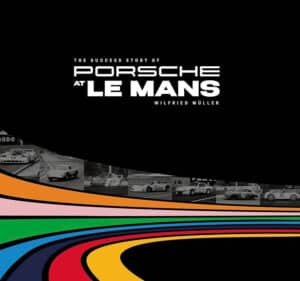JaguarSport XJR-15 book review: the supercar they sent to Coventry
A new hardback on Jaguar’s early ’90s all-carbon two-seater XJR-15, by its designer, sets the record straight, says Gordon Cruickshank
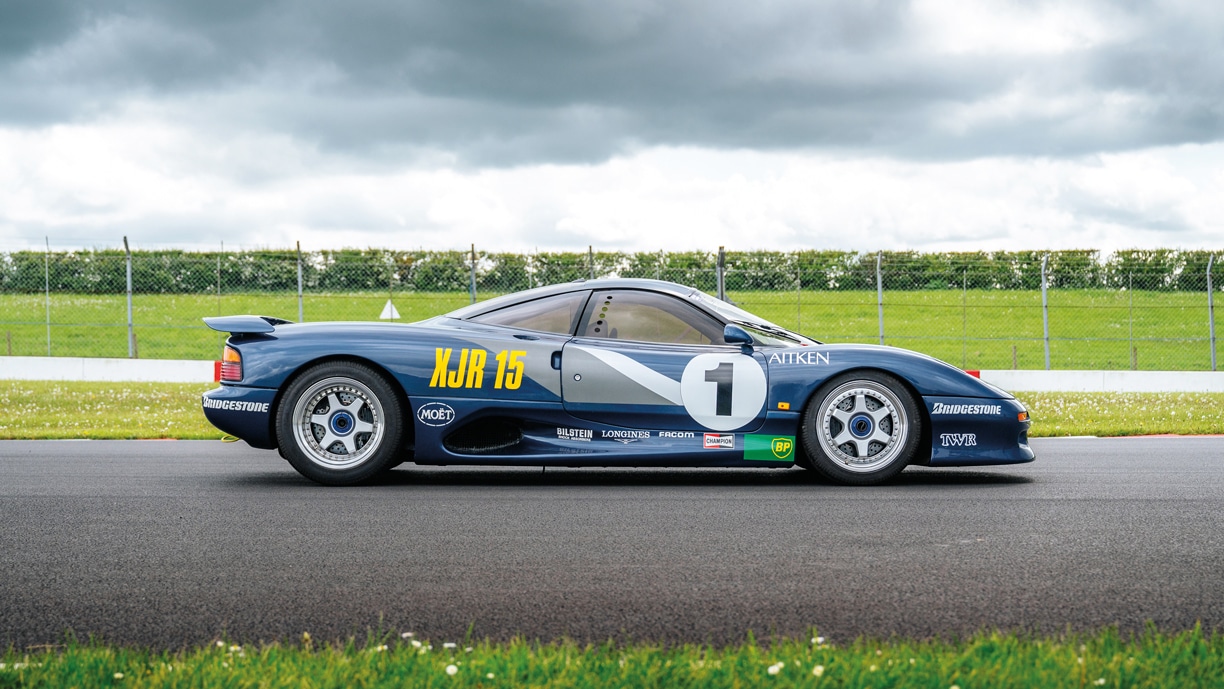
Perhaps there’s a little bit of Motor Sport in the Jaguar XJR-15... the designer’s uncle was our own Jenks
Jayson Fong
‘Win a race, win a million’ – that was the attention-getting headline which put TWR’s XJR-15 roadable racer into the public gaze. Oh, and running the races (just three of them, mind) at grand prix meetings would parade your new supercar, and your team, in front of the very people you want to impress – the Formula 1 cabal. But when you’re Scottish bulldog Tom Walkinshaw things are likely to fall your way.
Written by the man who made the car look so seductive, this is the complex tale of how the Jaguar that wasn’t meant to be a Jaguar joined the stable of the Coventry firm – even though it had its own outrageously expensive supercar to sell as well. It’s a challenge to keep track of the interlacing threads, some of them coloured Silk Cut purple, that weave the story since the man at the centre, the indefatigable Peter Stevens, was involved in so many things at the same time. As I was making notes I checked back and forwards thinking, “Was that before or after he was design director at Lotus?”, only to find that he was running the Norfolk position in parallel with shaping XJR-15. Not to mention freelance projects.
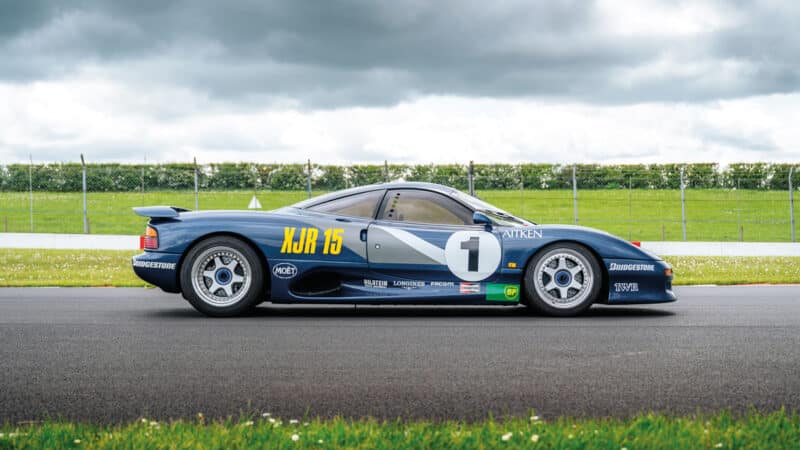
Perhaps there’s a little bit of Motor Sport in the Jaguar XJR-15… the designer’s uncle was our own Jenks
Jayson Fong
Peter’s parents were both artists, father one of the Camden group, and this blend of aesthetics and mechanics has to be one reason why his cars, race or road, have usually looked better than the opposition. That’s not a question of styling, it’s the integration of design forces with elegant proportion. Follow the success of Richard Lloyd Racing Porsches and you’ll find Peter’s hand behind steady aero improvements. Ditto the Commodore saloon racers in Australia.
One man who was a notable influence on this designer was our own Denis Jenkinson, who was Peter’s uncle and taught him to be creative with Meccano. “Throw away the instructions and build something new,” he told his nephew. “Following the instructions just shows you how to make the same things.”
There’s a great picture in the book of Jenks astride his Tribsa bike, bright-eyed and bushy-bearded, just as I remember him.
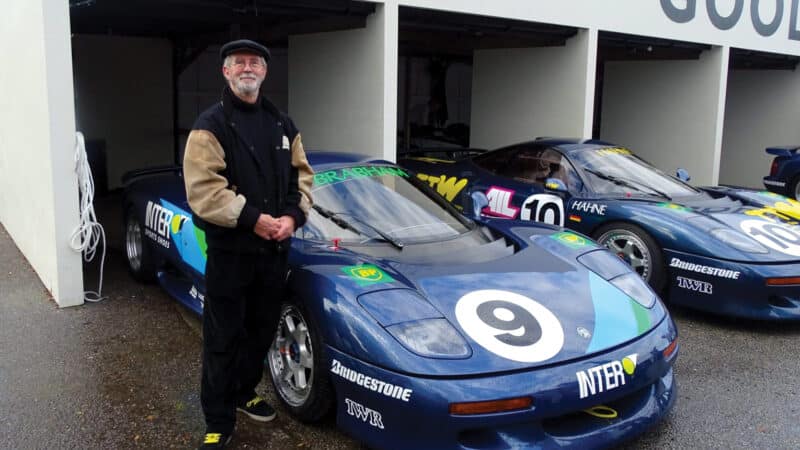
Designer Peter Stevens
Jayson Fong
Another major influence was racer, team manager, manufacturer and F1 team principal Tom Walkinshaw. Stevens feels it’s important to show us who Walkinshaw was, and having worked with him for many years he’s is a fine source. He describes Tom as “a competitive racer first but an aggressive businessman a close second. To understand the XJR-15 it’s important to understand these motivations because they both drove Walkinshaw. Racing was a business to him.”
On the other hand, while Tom could be scary, Peter adds that “he knew how to have fun with his team” as Mazdas, Rovers and Jaguars fed into the XJR series of sport-racers and sparked Tom’s ideas for a road-legal XJR. Intended to be called TWR R9, (the badge designs are illustrated) it was a secret from Jaguar which was also scheming XJ220, until Coventry boss John Egan saw the mutual benefit of both emerging from the TWR JaguarSport umbrella – as long as 15 was slower than 220.
How that idea grew into the world’s first production car with a carbon-fibre tub and body is full of fascination and design insights, not just about the sketches, mock-ups, tunnel testing and hours of reshaping clay models but about the “chaotic and challenging character” of much modern car design. No such a complaint about the finished 15 which wowed everyone on launch, especially with that $1m prize fund. Fifty cars (and two prototypes) would be built, 16 prepared for the Intercontinental Challenge rounds at Monaco, Silverstone and Spa, which brought all the attention Tom wanted to lubricate his F1 progress. It also provoked a great deal of bickering among the investors and owners, Stevens tells us, over who had which car. In the end Armin Hahne took the $1m cheque after some drama-packed racing, but Tom wasn’t quick to pay…
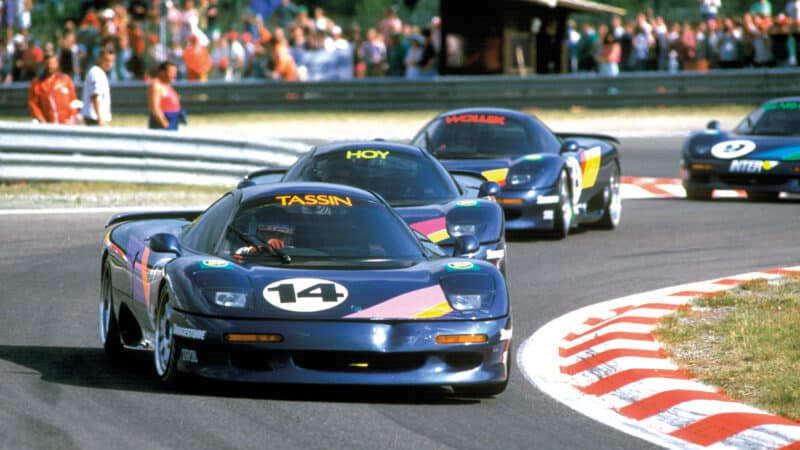
And then there was the three-race Intercontinental Challenge in 1991 – here at Spa – as an F1 support race
“Some of the last cars were specced-up as LM versions and are extra valuable”
Some of the last cars were specced-up as LM versions and are now extra valuable, though Peter points out that after the early fanfare values dropped away sometimes to just £100,000. Now, he reckons, they’re emerging from a deep sleep, and Don Law Racing can improve the driveability if you require.
There’s more history than you’d expect on the WSC and Le Mans achievements, but the author comments that without the LM programme there would not have been an XJR-15. If some of the book is partly a career portrait of this respected designer – well, he hasn’t done an autobiography before – it’s also a prolific record embracing work for Ford, Ogle/Reliant, Prodrive, Subaru, Mazda, Lotus, MG, TWR and the McLaren F1. Then there are the team liveries – he tells a great story about Niki Lauda refusing to drive a Brabham with a new sponsor scheme “that looks like shit”. Bernie summons Peter; hours later Lauda is happy, and Peter’s Brabham years begin.
Naturally Peter’s dramatic sketches figure but also his schedules and notebooks which show the rapid development of XJR-15. There are a few too many samey shots of finished cars, but if you want the proper story, with widespread inaccuracies straightened out, told by the man who couldn’t be any closer to it, start here.
JaguarSport XJR-15
Peter Stevens
Porter Press International, £149
ISBN 9781913089665
The success story of Porsche at Le Mans
Wilfried Müller
This covers the first 72 years of success at Le Mans, says the author, confident of more to come. And probably right, looking back at this reminder of Stuttgart’s triumphs, and trials. Every race from 1951 to 2022 gets a short summary with generous pictures, often the firm’s own behind-the-scenes shots of pits, trucks, etc – and there’s a profile on the current 963. Something a little different is the archive section with much internal material – bills, correspondence, team notes, lap charts, drawn dashboard diagrams. Not sure who would read all of it but at least it’s available. Loads of info for the price. GC
McKlein Publishing, £135
ISBN 9783947156566
Classic Racing: On track action captured at the Silverstone Classic Festival 2012-2023
Peter Osborne
Anybody who’s been a regular of the Silverstone Festival over the last decade and more is indeed fortunate, for the sheer volume of racing cars that have descended on the track from all eras each summer is mesmerising – as Peter Osborne’s images convey. He’s no Louis Klemantaski but then again Silverstone doesn’t offer much in the way of a dramatic backdrop. Even so, Osborne’s determination to capture peak action at the annual classic is evident. He gets his shots from every angle – a Lotus Cortina from the rear, a Brabham BT49C from the side, a Lola T210 from above, and in all weathers. Osborne’s year-by-year approach to his book comes with a detailed essay of what happened in which races, meaty captions the sort Motor Sport’s art editor simply will not allow and, at the end of each chapter, results. Two hundred and fifty-six pics across 260 A4 pages with, pretty much, racing history from the dawn of driving onwards thrown in. LG
From the Driving Seat, £29.95
ISBN 9781399978347

